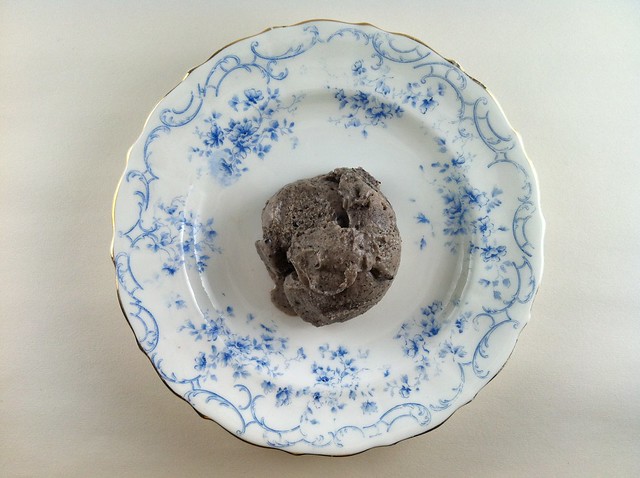Wow. I’m not the biggest dessert fan, but wow. I saw the photo of this recipe with the rock salt on top and I was immediately tempted to make it. Shauna was coming over with a bottle of wine to catch up, so I thought why not make dinner for the both of us while she made dessert?
Ingredients:
10 tbsps, or 1 1/4 stick, unsalted butter, sliced in small pieces
1 1/4 cup sugar
3/4 cups plus 2 tbsps unsweetened cocoa powder
1/4 tsp salt
1/2 tsp vanilla extract
2 cold large eggs
1/2 cup all-purpose flour
rock salt
1. Position the oven rack in the lower third of the oven and preheat the oven to 325º Line the bottom and sides of an 8-inch square baking pan with parchment paper, leaving an overhang on two opposite sides. Set aside.
2. Simmer some water in a deep-enough and wide skillet. Combine the butter, sugar, cocoa, and salt in a medium heatproof bowl and set the bowl in the skillet when the water starts to simmer. Stir from time to time with a heatproof spatula until the butter is melted and the mixture is smooth and hot enough that you want to remove your finger fairly quickly after dipping it in to test.
3. Remove the bowl from the skillet and set aside briefly until the mixture is only warm, not hot. Stir in the vanilla. Add the eggs one at a time, stirring vigorously after each one. When the batter looks thick, shiny, and well blended, add the flour and stir until you cannot see it any longer, then beat vigorously for 40 strokes with the spatula.
4. Spread evenly in the lined pan. Bake until a toothpick plunged into the center emerges slightly moist with batter, 20 to 25 minutes. Let cool completely on a rack. Lift up the ends of the parchment, and transfer the brownies to a cutting board. Sprinkle with rock salt and cut into squares.
Related post/s:
Bittersweet: Recipes and Tales from a Life in Chocolate on Amazon
Recommended tool/s:
The Spatula by GIR (Gear that Gets it Right)




